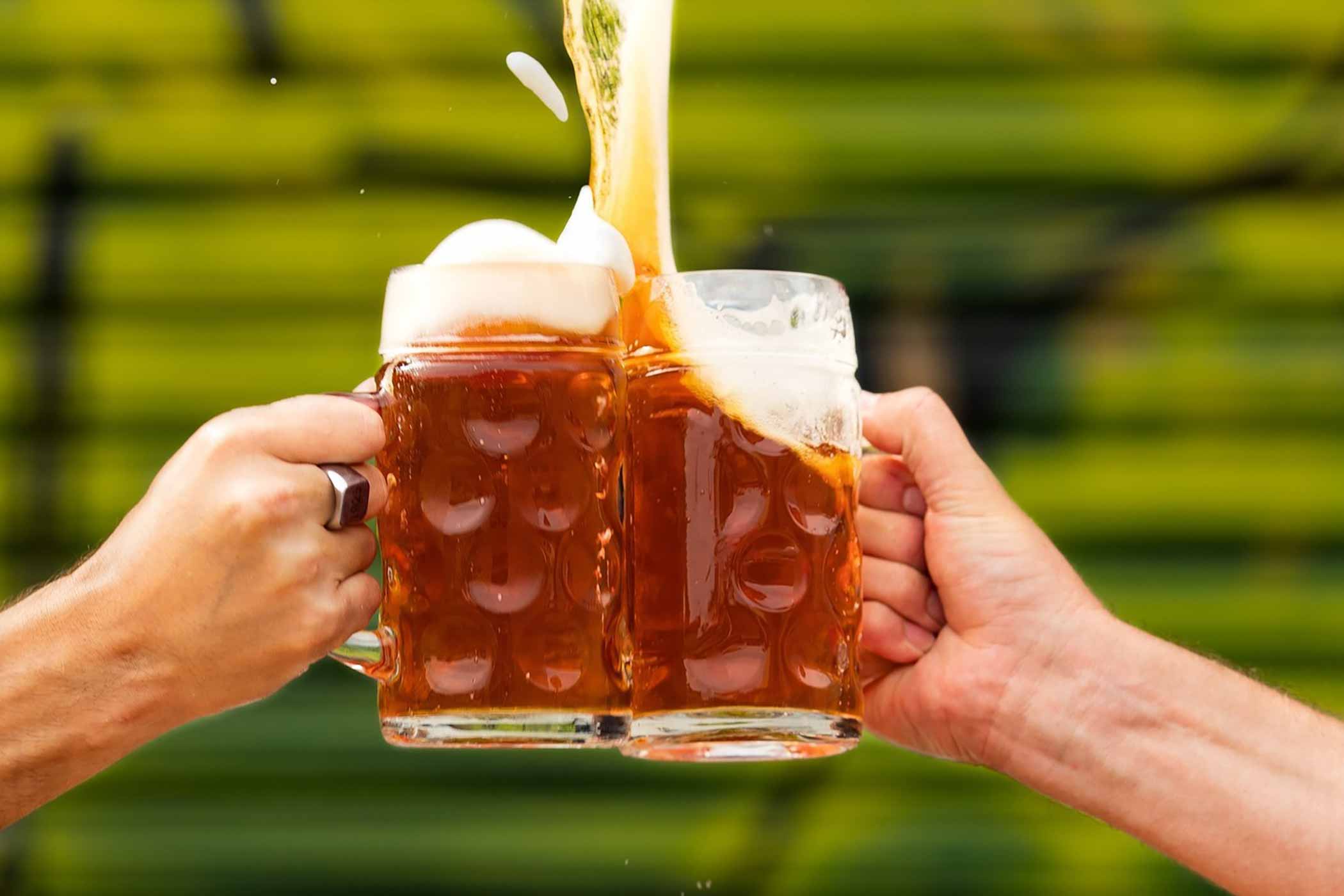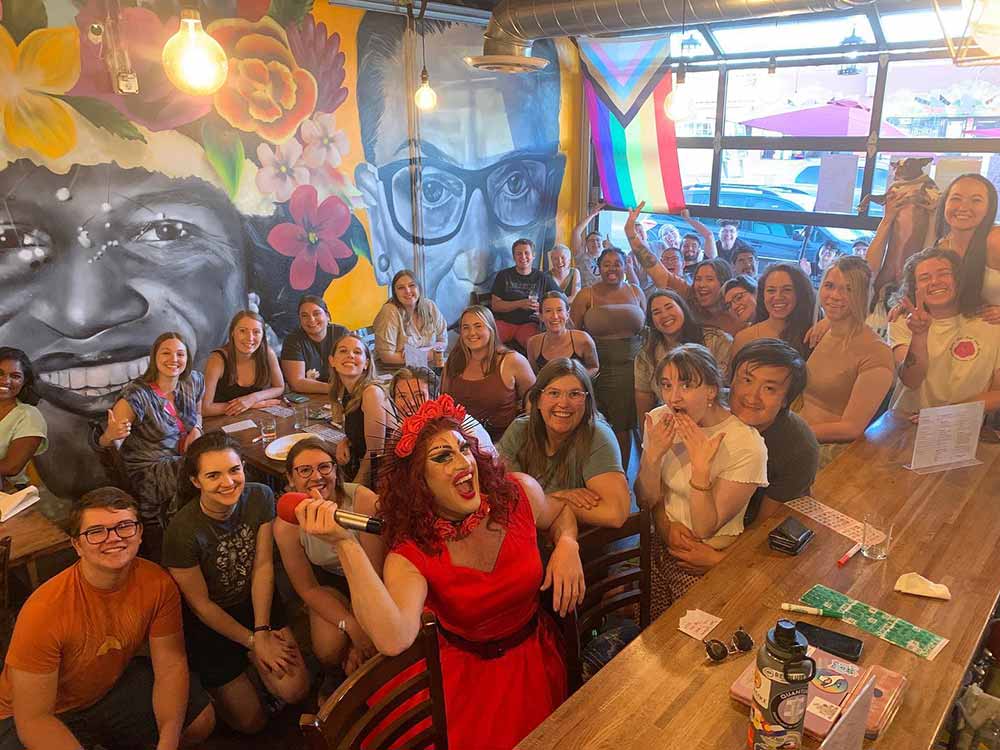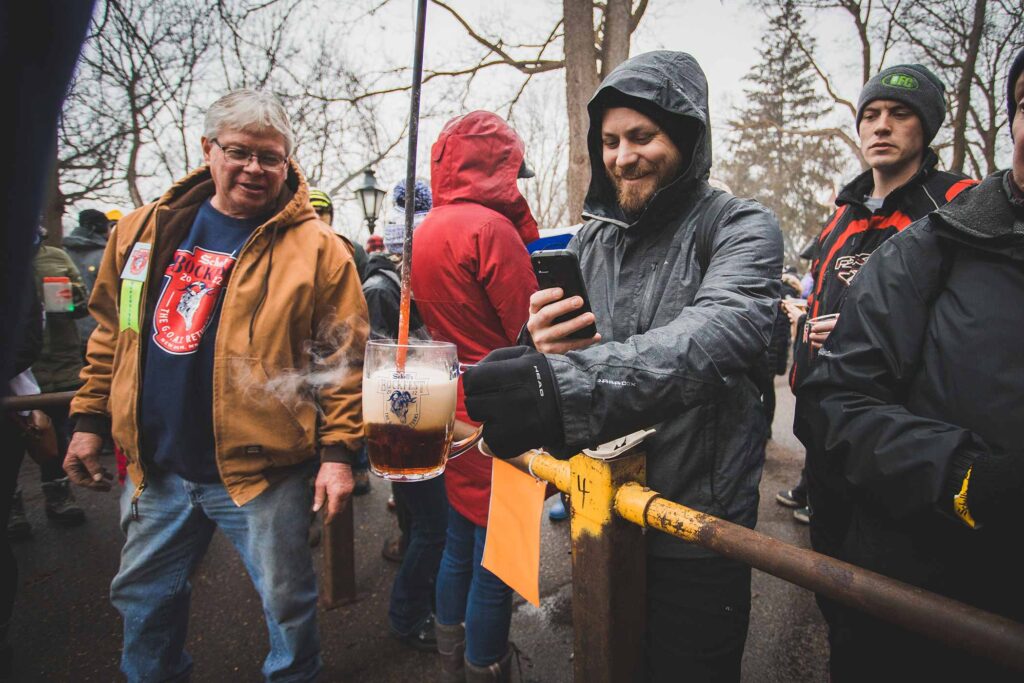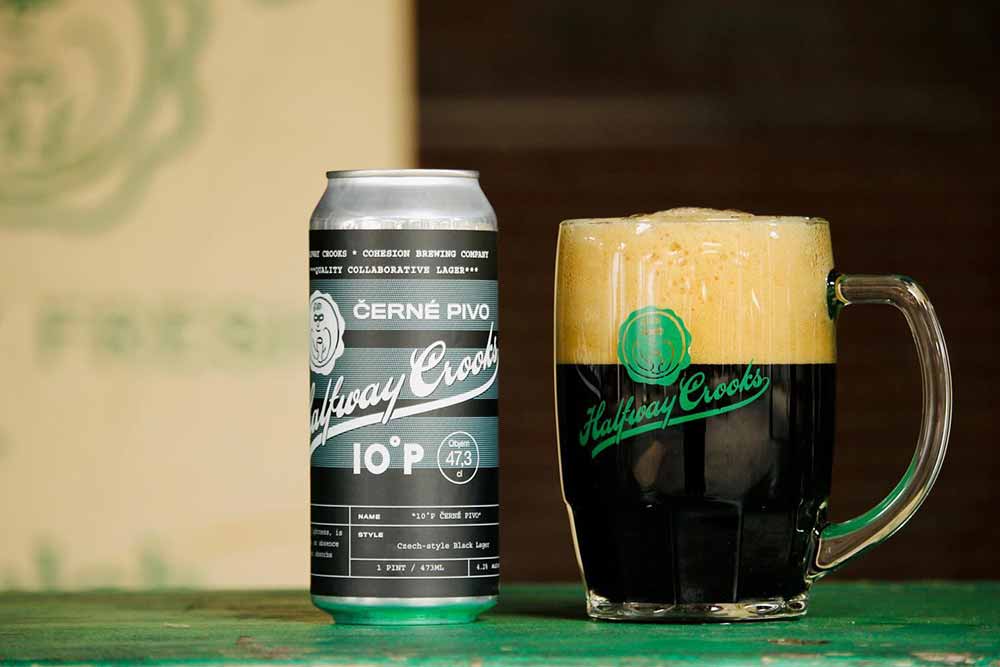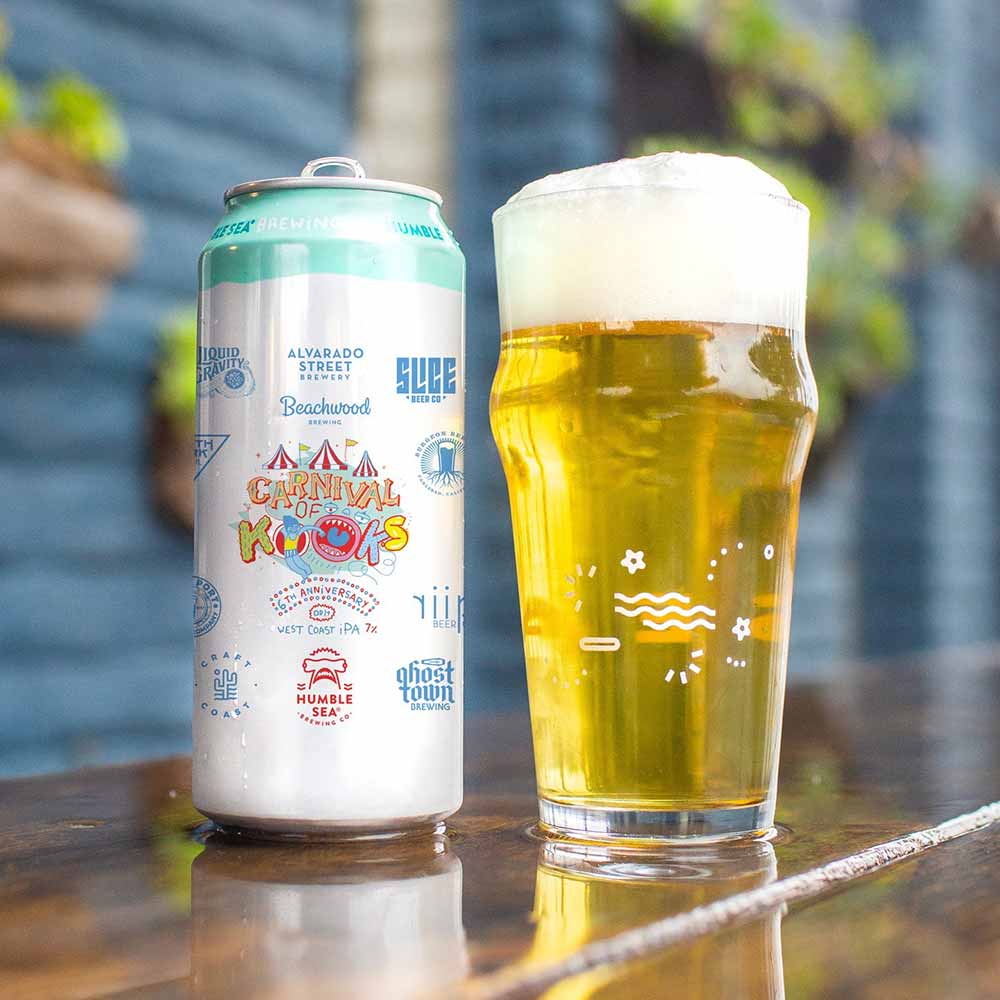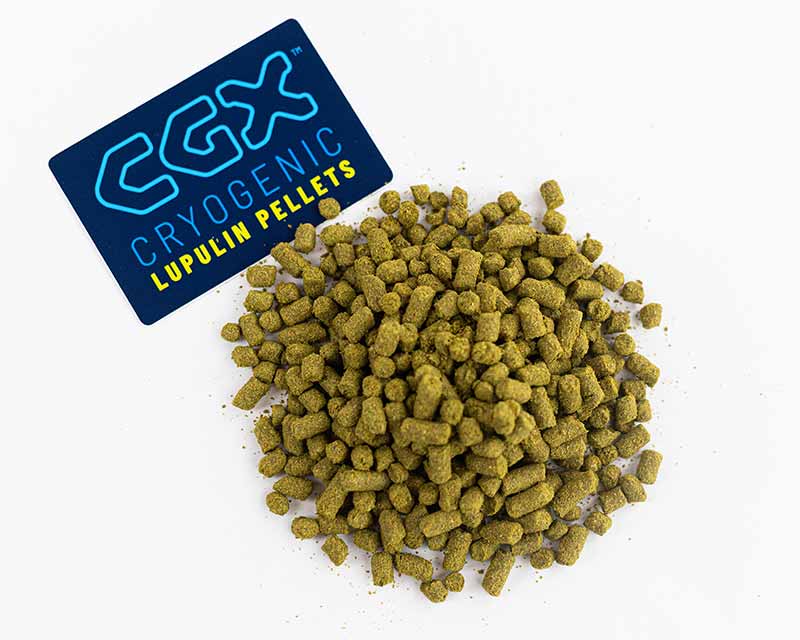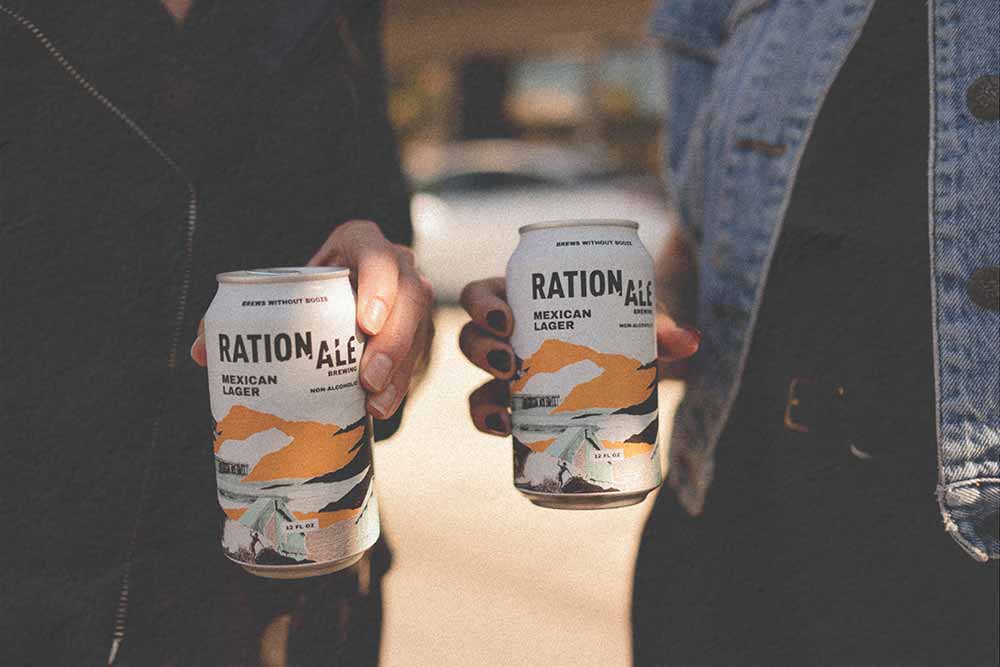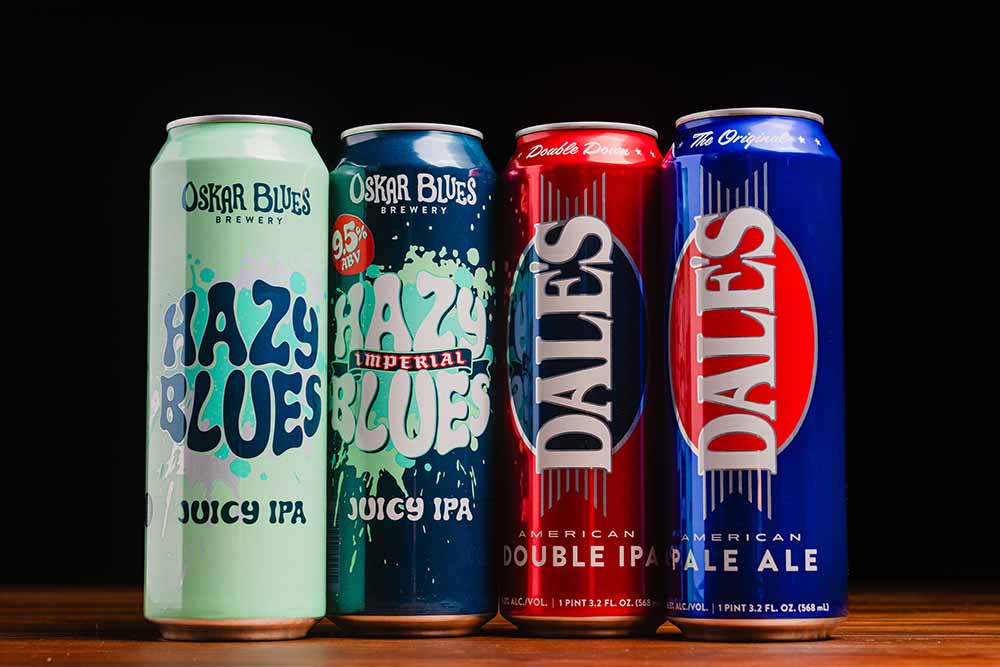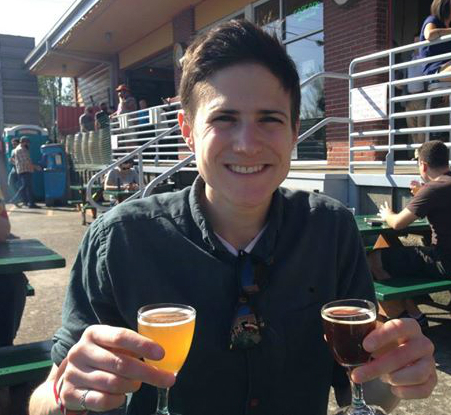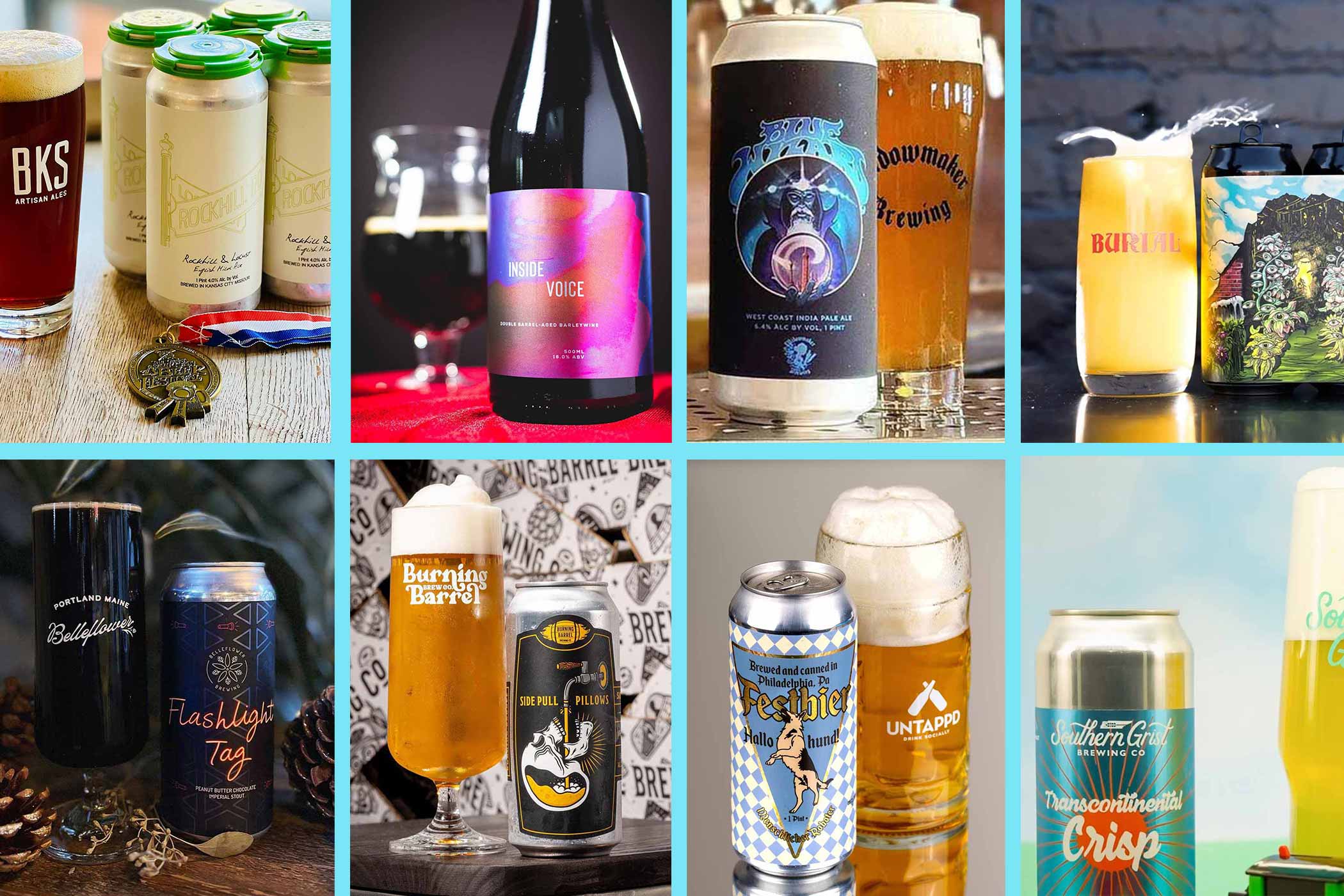Shop
The 9 Craft Beer Trends to Watch in 2024
Looking for More of the Best?
We’ve set our new ‘beer’ resolutions for the year, we’ve told you which non-alcoholic brands to try, and we’ve shown you the breweries that we’re closely watching. But the new year wouldn’t be complete without looking at the craft beer trends to watch in 2024.
Look, we’re hearing a lot of “doom and gloom” that we feel is a bit dramatic (and we’re writers, for gosh sake).
Yes, the explosive growth of craft beer that we all reveled in for many years has plateaued. But Brewers Association Chief Economist Bart Watson calls it a maturing marketing. “This is not a bubble bursting,” he said during a Massachusetts Brewers Guild’s Technical Brewing and Business Conference presentation. “[Instead craft has] moved out of the golden age” and is now just behaving like a “normal market.”
Yes, for the first time, brewery closings almost matched brewery openings (385 vs. 420, respectively). But that doesn’t mean we’re knocking on the door of an apocalypse just yet.
“While many individual businesses are struggling, there is good news in the continued overall popularity of the category,” said Watson in a Brewers Association press release. “Yes, things are more challenging, but independent brewers still sell more than one out of eight beers in the United States; beer drinkers spend roughly one out of four of their beer dollars on a beer from a small and independent brewer; and the industry remains a source of jobs and community across the country.”
To survive, Watson encourages small brewers to “take share within the same pie or grow the pie in new ways.”
Accordingly, most of our craft beer trends below follow that advice. In no particular order, these are our nine projections, forecasts, and predictions for craft beer trends in 2024.
Hop Culture’s 9 Craft Beer Trends to Watch in 2024
Taprooms Must Embrace Evolution
Last year, on our list of craft beer trends we pointed out a return to taprooms. We predicted folks would emerge from their COVID cocoons and get back to drinking on-premise. This year, we feel breweries have the extra challenge of evolving the taproom experience.
From people we’ve talked to in the industry, those who are spending their money at taprooms don’t just want beer anymore; they don’t just want new releases anymore; they want an experience.
“I think that taprooms are going to have to innovate more than ever as consumers migrate back from taprooms to traditional bars,” says Brady Barlow, co-founder of West Sixth Brewing in Lexington, KY. “Events are key. Increased community engagement is key. Food helps, for sure.”
What food trucks are breweries bringing in, or what type of food are they making in their kitchen? Do you have something else we can do while we’re there? Disc golf? Pickleball? Even bringing different global beer-related traditions into taprooms has become huge (see below). Are breweries hosting drag shows, paint and sip nights, live DJs, or various events to attract consumers?
Bottom line: Taprooms can’t just pour beer anymore; they must be cultural hubs for their community.
Taking Time for Traditions
Culture is cyclical, no?
Pokémon is cool again, right? (Or at least those who held onto their Charizard could get a little richer. We tried to find our old cards, no dice.)
Denim on denim is no longer taboo. (We wore a getup like this many times. ????) A
re crocheting and knitting now the “it” hobbies? (We haven’t done it, but many have.) If this sitting-on-your-butt hobby didn’t hit, getting up and going to the roller rink again sure did.
And Barbie… Need we say more?
Not every trend of yore hits us on the head again like a pog. (That reference should date us. And if you don’t even know what that word means, you’re probably not of legal drinking age.) But naturally, some do.
And craft beer is no different.
It may seem like an oxymoron, but for breweries to move forward, they may need to take a step back. We see a hunger for turning back time inside the taproom.
German customs like kölsch service—getting fresh, cold kölsch served to you continually until you say stop—and bierstacheln—aka hot beer poking—have popped up at breweries across the country.
The number of breweries installing a side-pull faucet and learning the different proper Czech pours has grown immensely.
And similarly, those with beer engines, serving real or cask ale in the English tradition, seem to be surging as well.
We’re sure there are more historic beer practices out there we haven’t even discovered yet, but we’re excited to learn.
So, for the future, expect to see the past.
With beer styles, too.
Love for the Larger Lager Landscape
We can’t tell you how many years we’ve heard the phrase “Year of the Lager” thrown around, predicting consumers will drink more lagers in the next twelve months. This love for lager has dominated craft beer trends for at least the past five years. Up until now, we can’t say consumers have truly embraced this one.
But finally, we do see a lot of positive signs for lager growth in 2024. According to Untappd, the style “Light Lager” cracked the 2023 style leaderboard for the first time with just shy of 7.9 million check-ins last year, good for third place.
The e-commerce platform Drizly reported similar statistics. According to a yearly survey of 1,000 adults of legal drinking age, forty-three percent of consumers said they planned to drink lager in 2024, more than any other beer subcategory.
You’ll hear echoes of this throughout the industry in different ways. Some, like StormBreaker Brewmaster, GM, and Co-Founder Rob Lutz, believe that we’ll see more pilsner variations. “While the traditional Czech and German styles have become more popular, we’ve also seen consumers gravitate toward more creative or experimental variations of pilsners,” he says. “At StormBreaker, we’ve gone in a slightly different direction as we’ve leaned into pilsner experimentation and have now brewed a New Zealand Pilsner, French Pilsner, and Italian Pilsner, amongst others. We’ll continue to explore other ways in 2024 to spice up a style we love to see getting more and more traction.”
At East Brother, Brewmaster Paul Liszewski notices a larger pendulum swing with both new breweries and consumer palates. “We’re starting to see the next generation of craft brewers entering the market, and they’re more open to traditional styles, not trying to do a new hazy or two every single week,” he says. “[With consumers], I’d rather see you take a 4-pack of Bo Pils or Pre-Pro lager and stick it in your fridge, and while you’re doing housework, weeding the garden, working on the car, whatever, you’ll want a beer, and you don’t even think about grabbing one of those lower-ABV [beers]—something you can have more than one of and before you know it you finish the 4-pack. That was a good Saturday.”
Hop Culture Social Media Manager Magic Muncie has also noticed this resurgence in traditional styles, noting that well-made craft lagers have been celebrated more than at any time in recent history.
For us, as we did last year, we’re making this prediction more specific. We called 2023 “The Year of the Czech Lager,” and we feel confident we nailed that one.
This year, we’re predicting this will be “The Year of the Dark Lager,” whether that’s Czech dark lager, German or American dark lager, or more.
Now, this is normally where we share the Untappd data to back up our anecdotal claims. In 2023, the category of “Lager – Dark” had 450k check-ins. So not a cannonball, but not an insignificant toe in the pool either.
Empirically, almost every beer package we’ve received has included a dark lager, and almost every brewery we visited had something dark and cold-fermented on tap.
So call this one an intuition or a hunch, but going over to the dark side of lagers is our bold prediction for 2024.
West Coast Is Back Baby…And Not Just IPAs
We spoke of that pendulum swing earlier as a major shift when it comes to craft beer trends. Overall, we’ve noticed that brewery have balanced their portfolios, swinging back from hazies all day every day to including other hoppy varieties and beyond (dark lagers, for one).
Look, it’s been pretty clear to all of us that, for quite a while now, hazies dominated tap lists, shelves, and overall consumer preference.
But just ask yourself this question: During the last decade, have West Coast IPAs gone anywhere?
No! But they’re finally peeking out from behind that opaque shadow again.
“Things are much more balanced,” Humble Sea Co-Founder Frank Scott Krueger told us, admitting at one point Foggy IPAs, the brewery’s version of a hazy, accounted for ninety-five percent of their production. “That’s definitely not the case at all anymore. Foggy IPA is still our dominant style, but it’s just not insane.”
BKS Artisan Ales Co-Founder Brian Rooney has noticed something similar. “We’ve gone from a place where we use to sell hazy beer three to one over everything else, and now we’re one to one to one [on draft in the taproom] with lager, hazy beer and West coast, and that’s west coast pale or West Coast IPA across the board.” He’s looking forward to focusing on dialing in more West Coast interpretations this year to meet his customer’s demands.
Pure Project Founder and Brewer Winslow Sawyer agrees, noting that for something like four years, Pure Project didn’t even brew a West Coast; they only made Murky IPAs, their iteration of a hazy. But now his mind has been more on West Coast IPAs as the brewery again dips its toes into that style pool.
Scott Krueger cites a returning appreciation for West Coast IPA with a slightly new style approach. “West Coast IPAs have evolved with palates,” he says. “They’re still super dry and crispy, but they’re also using newer-school [hops] … and they’ve got a bit of a fruitier profile.”
But the West Coast qualifier doesn’t just apply to ales anymore.
“I keep seeing West Coast pilsners pop up,” says Lutz. “That may be a style that catches the eyes of more brewers in the new year.”
All signs say that the West Coast is back, baby!
Hop Hop Hooray!
HopKick, HopHaze®, FLEX®, SPECTRUM, INCOGNITO®, Salvo™, Cryogenically Processed Lupulin Pellets (CGX), and more.
At this point, the new hop products and techniques on the market seem to come out as often as a new round of beers in your brewery membership or bottle society.
Brewers aren’t just searching for the hottest hops anymore; they’re experimenting with hop extracts, oils, and frozen products. And yes, one of the goals is to increase the flavor and aroma of their beers, but there is a more practical reason, too.
“I think we will see more and more people experimenting with new hop products, specifically hop extracts and oils,” says Lutz. “But the rationale for this experimentation will go beyond maintaining and expanding the aromatics and flavors of IPAs. Hop extracts and oils can also support increasing yields and, therefore, increasing profits. With the rising cost of ingredients (and most everything else these days), maximizing what you can get from these expensive ingredients is paramount. For the most part, the industry hasn’t been able to raise our prices to keep up with the cost increases we’re all absorbing, so we must get creative with how we make up for this.”
Chances are if you see a word you’re unfamiliar with—“cryo,” “Lupomax,” “CGX”—that’s a good indication you’re getting a beer on the cutting edge, brewed with something new.
Needy for Non-Alcoholic
By now, we’ve all realized that the non-alcoholic segment isn’t just a phase; drinking non-alcoholic beer, wine, and spirits has become a legitimate part of our beverage industry with the numbers to back it up.
“[Non-alcoholic beer] is blowing up,” The Boston Beer Company Senior Brand Manager, Samuel Adams, Jasen Holley told us. “We think in the next three to five years that non-alc could grow to be 1.5 to 2.5 percent of total beer, which means a tick under sixty million cases up for grabs.”
We’re only a few days into 2024, but already, we’ve seen a significantly higher number of breweries announce new non-alcoholic beers and releases, including Sierra Nevada, Samuel Adams, Aslin, Boulevard, Southern Grist, Prison City, Karl Strauss, Night Shift, and Brooklyn Brewery. We’ve seen some of our favorite places drop new hop waters, such as Great Notion and Humble Sea. Meanwhile, the number of straight-up non-alcoholic brands sending us beer packages has tripled this year.
New brands that have introduced themselves to us include Kit NA Brewing, Eighteen Twenty Brewing Co, Rick’s, and Momentum, and those continuing to grow include Athletic, of course, RationAle, and Best Day, among others.
And we’re sure there are plenty more NA drops that we’ve missed. Point being: Non-alcoholic beer is more popular than ever, and the stats back that up.
During the Adult Non-Alcoholic Beverage Association (ANBA) December webinar, CEO Marcos Salazar said that non-alcoholic beverages had “the largest year of absolute dollar growth in five years.”
According to Salazar, during the 52 weeks ending July 29, 2023, non-alcoholic offerings accounted for $510 million in sales, according to NielsenIQ-tracked scan data. Additionally, non-alcoholic beverages grew 31% year over year, increasing sales by $121.2 million.
Amazingly, but perhaps not surprisingly, non-alcoholic beer drives this growth, amounting to 86.1 percent of the segment, according to NIQ, backed up by non-alcoholic wine (11.2 percent share) and spirits (2.7 percent share).
Although both non-alcoholic wine and non-alcoholic spirits account for a smaller percentage of non-alcoholic beverages sold, both categories grew substantially over 2023, with NA wine gaining 18.5 percent and NA spirits climbing an incredible 94 percent compared to last year. Which is why our list of “The Best Non-Alcoholic Brands to Watch in 2024” includes beer along with wine and spirits, for the first time.
Don’t knock it until you try it. And Dry January is a perfect time to try it.
Welcoming the Not-so-New RTD: Hard Tea
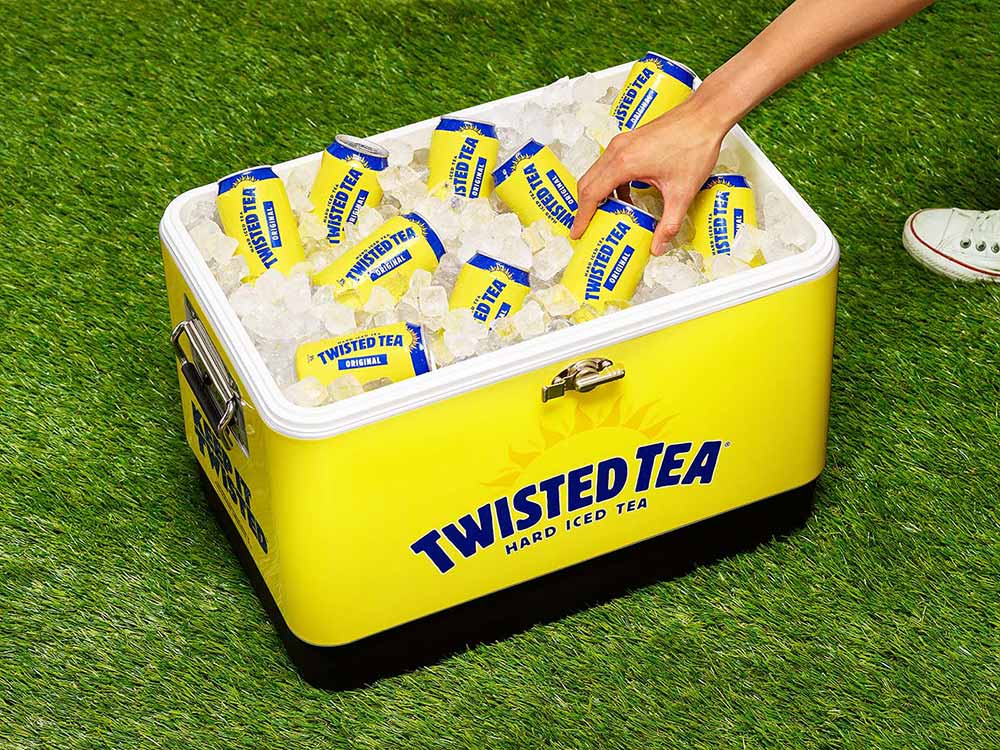
Photography courtesy of Boston Beer Co.
During a webinar, Brewers Association Chief Economist Bart Watson reported that “the number one reason why people say they’re drinking less craft isn’t because they’re watching their waistline or watching their wallet, it’s because they are drinking more of some other type of beverage alcohol.”
In large part, ready-to-drink cocktails (RTDs) drove that “other type of beverage alcohol.” Global beverage alcohol data analysis firm IWSR expects the RTD category to grow 12 percent in the next five years, hitting $40 billion by 2027.
The exponential rise of RTDs is old news, but what’s trending this year?
Hard tea.
A few years ago, hard coffee generated most of the buzz. For the most part, that’s died off, replaced by hard tea.
Halfway through 2023, NIQ data showed hard teas driving growth in the FMB segment, with an almost 39% YTD growth, increasing sales to nearly $385 million and making up 2.3% of total beer dollar sales.
Boston Beer Co. alone reports its Twisted Tea sales whistled to the tune of ninety-one percent of all hard tea sales, according to Bump Williams Consulting (BWC). In truth, Twisted Tea has held the crown for the last twenty years.
But for the first time, other players are vying to rule the kingdom, forcing Boston Beer to drop new products like Twisted Tea Extreme and Sun Cruiser, a spirits-based, non-carbonated hard tea brand.
Outside of Twisted Tea’s throne, Cape May launched a new seasonal Hard Iced Tea, as did New Belgium—Voodoo Ranger Hardcharged Tea—and Monster Energy with its Nasty Beast non-caffeinated hard iced teas.
According to BWC, hard tea expanded from 80 brands in 2020 to almost 150 in 2023, and we only see this number continuing to grow in the new year.
It’s pinkies up for hard tea in 2024!
Pushing New Packaging: The Highs and Lows
When, over twenty years ago, Oskar Blues Founder Dale Katechis put his iconic Dale’s Pale Ale in a 12oz can, he started a canning revolution. More recently, we remember when tallboy 16oz cans seemed new and novel. Of course, we can find this seemingly more bang-for-your-buck can size everywhere nowadays. But breweries aren’t resting on their laurels; they are introducing new packaging formats, both big and small.
Currently, 19.2oz cans, also known as stovepipes, are peaking.
Off the top of our heads, we’ve seen these breweries release some of their core beers in 19.2oz formatting—New Belgium (Voodoo Ranger), Bell’s (Two Hearted Ale, Hazy Hearted Ale), Firestone Walker (Double Hopnosis), Lawson’s Finest Liquids (Sip of Sunshine), Night Shift (Santilli), Tröegs Independent Craft Brewing (Troegenator, Perpetual IPA), North Coast (Old Rasputin, Scrimshaw), Jack’s Abby (House Lager), and Oskar Blues (Dale’s Double IPA, Imperial Hazy Blues IPA), among others.
At one point last year, according to NIQ retail scan data, 19.2oz cans were craft beer’s number one dollar growth driver (up 57 percent versus 2022), even ahead of twelve-pack cans. New Belgium’s Voodoo Ranger accounted for a lot of that growth.
The popularity of stovepipes makes sense. With standing out on the shelf at a premium, stovepipes tower over the competition, providing a clear differentiation point for breweries.
Equal to twenty British ounces (aka an imperial pint) but the same diameter as a 16oz can, 19.2oz cans give breweries more bang for their space while giving consumers more bang for their buck.
Breweries seem to put their higher-ABV styles into this format because you can buy and drink one throughout a barbecue, birthday party, picnic, or what have you, instead of buying a twelve- or six-pack of something.
We expect many more craft breweries to invest in a stovepipe format in 2024.
On the other end of the spectrum, we’re keeping an eye on brands going low—like these mini 8oz cans from Zilker, Westbound & Down’s Western Justice, or Hopewell’s Lil Buddy (in all fairness, those last two have been around for a few years now).
While we probably haven’t seen enough breweries go low to officially put 8oz cans on our craft beer trends list yet, we predict we’ll see a few more this year.
Brewery Consolidation
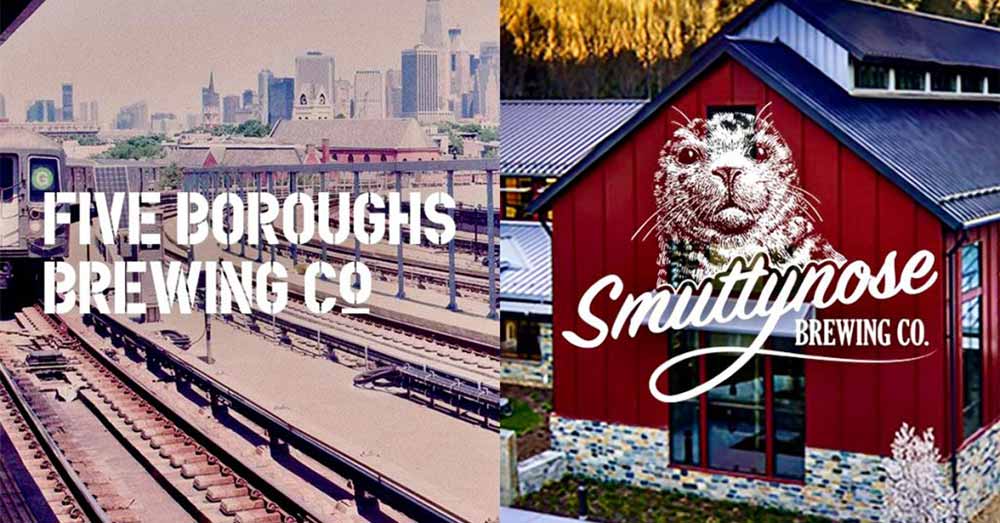
Graphic courtesy of Brewbound
Massachusetts’ Dorchester Brewing and Aeronaut Brewing Announce Planned Merger
Colorado’s Westbound & Down Acquires Aspen Brewing and Capitol Creek Brewery
Other Half to Acquire Young Lion’s Brewing Facility and Taproom
Smuttynose Parent Company Acquires Five Boroughs Brewing
Great Divide, Dry Dock Brewing Form Strategic Partnership
Seattle’s Stoup Brewing to Acquire Optimism Brewing
DuClaw Brewing Acquired by New Jersey Microbrewery River Horse Brewing
FX Matt to Acquire Flying Dog, Creating Top-10 BA-Defined Craft Brewery
Dokkaebier Acquires Oakland’s Federation Brewing
Black-Owned California Breweries Full Circle and Speakeasy Ales & Lagers Announce Merger
Drake’s Brewing to Acquire Bear Republic Assets, Per Report
Those are some of the top Brewbound headlines of 2023 and even the first few days of 2024.
Every month, it seemed like another brewery bought, acquired, or merged with another one.
Hop Culture Freelancer Andy Crump will be writing up a full report on this trend later this month, so we won’t go too far down the rabbit hole here, but suffice it to say we expect to see more of these headlines appear this year.

